Some everyday examples of friction include the rubbing of hands together to create warmth, tires gripping the road while driving to move a car forward, and even something as simple as rubbing two sticks together to create a fire. Friction helps objects stop or start moving by creating resistance between the surfaces. Without friction, we would slip and slide all over the place.
But because there are examples of friction like rubbing our feet on the carpet and then getting a shock of static electricity when we touch something metal, we know that this friction force exists and impacts motion in our daily lives.
- Examples Of Friction
- 1: Rubbing Hands Together
- 2: Brakes on Bike
- 3: Sandpaper Smoothing Wood
- 4: Opening Sticky Window
- 5: Tightening Stuck Screw
- 6: Wiping Counter Top
- 7: Opening a Sticky Drawer
- 8: Dry Chalk Squeaking
- 9: Scuffing Shoes on Carpet
- 10: Traction of Car Tires on Wet Roads
- 11: Sharpening Pencil in Manual Sharpener
- 12: Kinetic Friction of a Moving Bike Tire
- 13: Flint Striking Steel to Start Sparks
Examples Of Friction
Here are 10 daily life examples of friction (frictional force):
1: Rubbing Hands Together
When you rub your hands together, the force of friction between your hands causes them to feel warmer. The friction between the skin and skin generates heat.
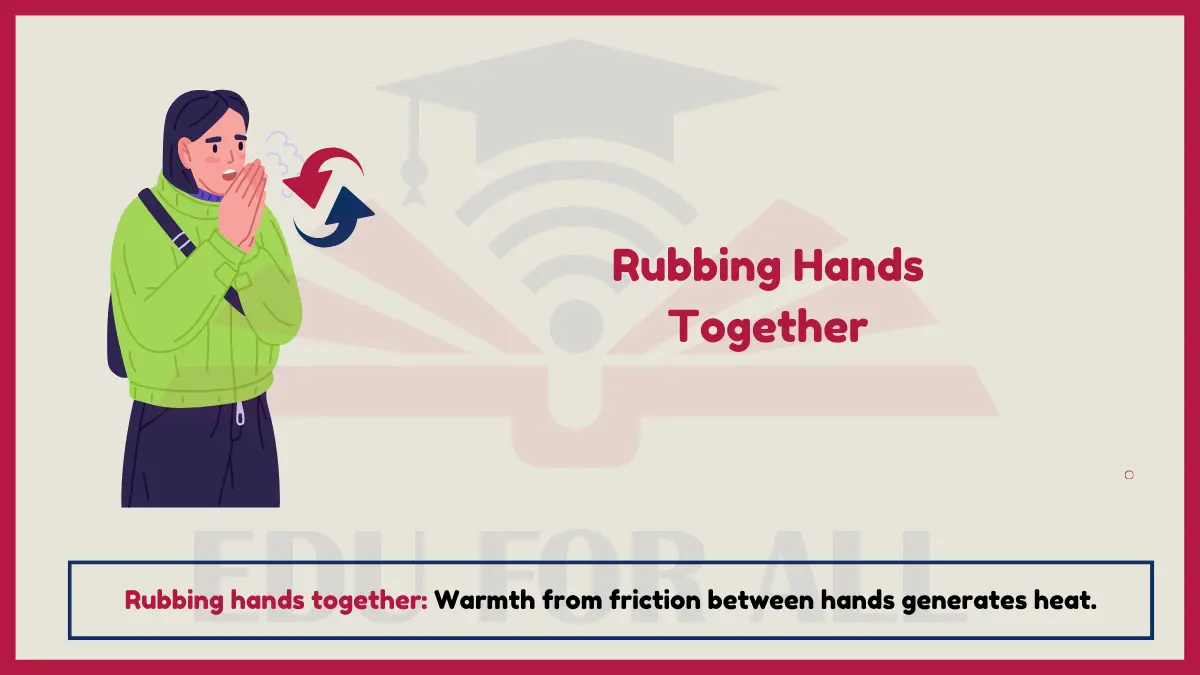
Experiment: Briskly rub hands palm to palm. Feel heat generated between hands due to frictional force. More force/speed when rubbing hands causes more friction and more noticeable heat.
2: Brakes on Bike
Bike brake pads rubbing against the wheel rims generate friction to slow down the wheels. Friction opposes the motion of the wheels, allowing you to control the bike speed.
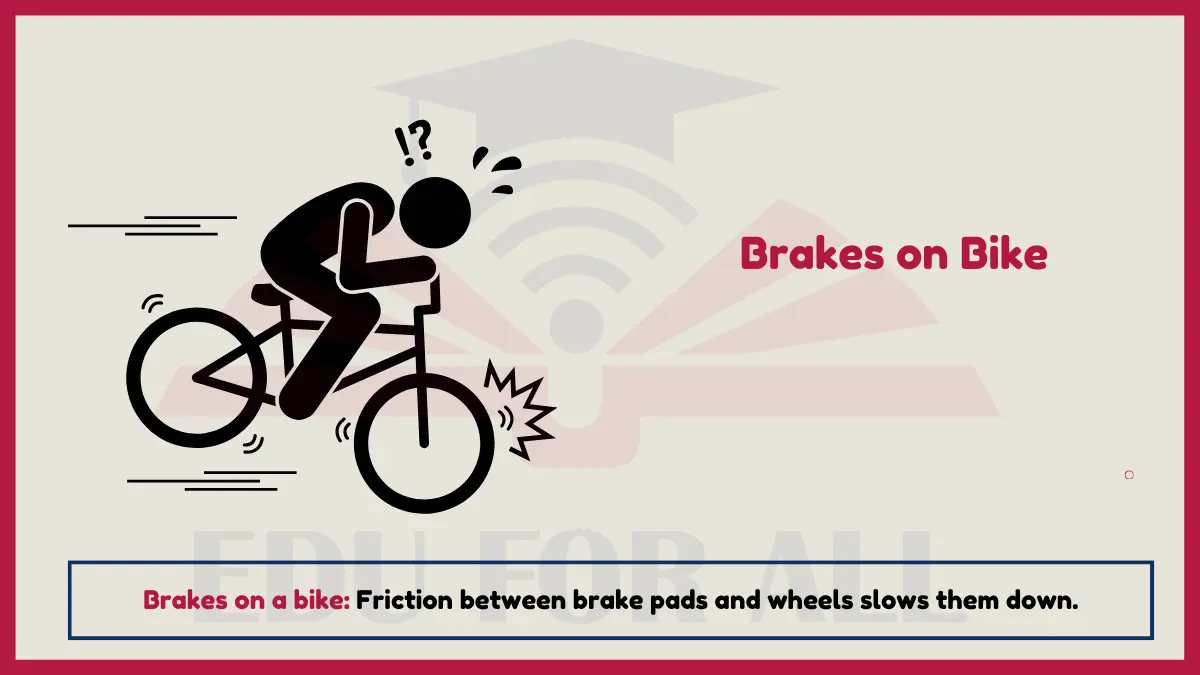
Experiment: Pedal a bike and engage the hand brakes. Feel force against hand/fingers as brakes use friction to oppose wheel motion. Notice connection between more brake pressure and more frictional force applied.
3: Sandpaper Smoothing Wood
Sanding wood with sandpaper is an example of friction wearing material away purposefully. The abrasive grit on the sandpaper rubs against the wood, grinding away rough areas through force of friction.
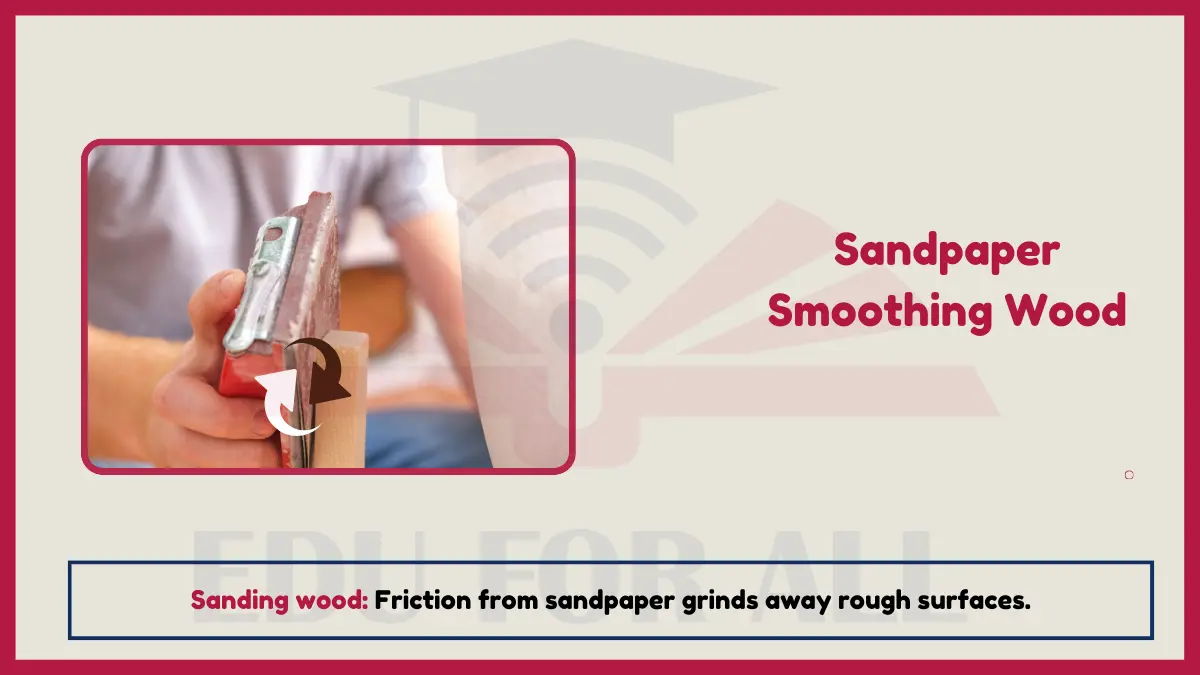
Experiment: Sand a wood block with sandpaper. Observe friction removing wood fibers, leaving a smooth, sanded surface behind. Feel friction heat generated from sanding motion.
4: Opening Sticky Window
When you tug forcefully to open a sticky window, you are overcoming the friction between the window and the window frame. Sticky windows have higher friction than smooth opening ones.

Experiment: Try to open different windows in your home. Feel the force required. Sticky windows need more force to start opening to overcome the friction between window surfaces. More lubrication is needed to reduce friction.
5: Tightening Stuck Screw
Trying to loosen a stuck screw demonstrates static friction, which must be overcome to initially get the screw moving. Once turning, kinetic friction is lower allowing you to fully loosen the stuck screw.

Experiment: Try loosening different screws in home objects. Rusted, paint-stuck screws resist turning at first due to high static friction. More turning force must overcome this to get them sliding via lower kinetic friction.
6: Wiping Counter Top
Wiping a kitchen counter top displays friction between the wipe cloth and counter surface. Pressure applied when wiping creates friction force to displace water, grease and debris across the counter.
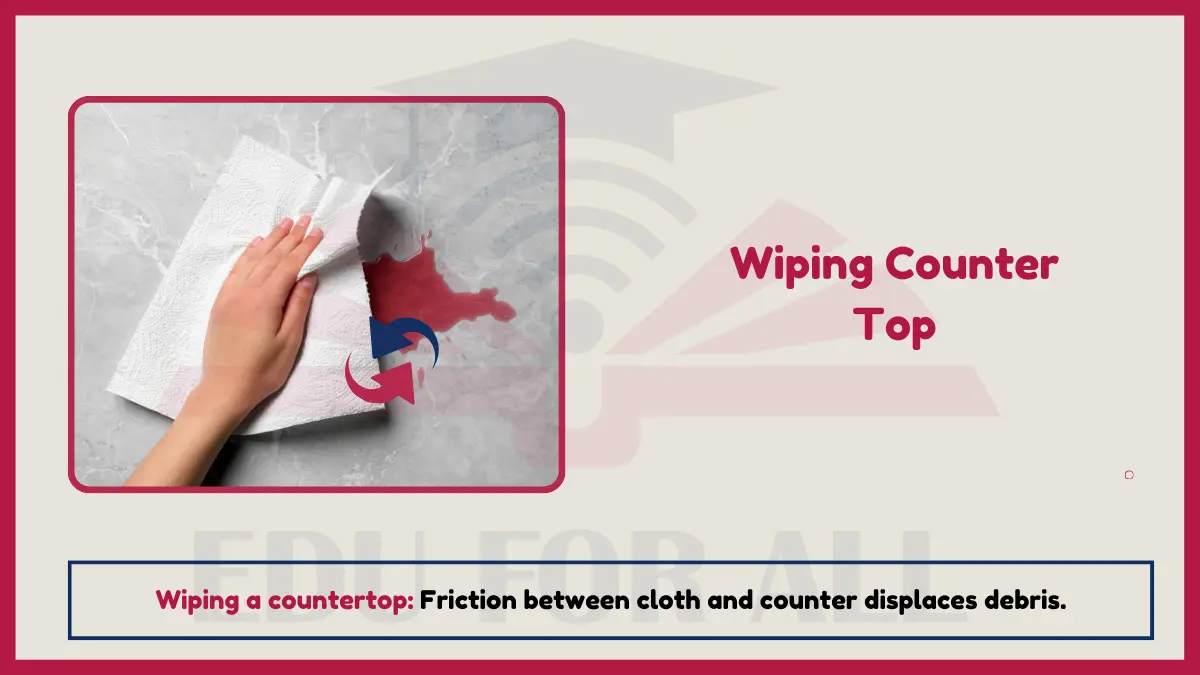
Experiment: Wipe kitchen counter top using different wipe materials and pressure. Notice how force and friction of wipe material interacts with counter to clean effectively. More pressure and rougher cloths use more friction.
7: Opening a Sticky Drawer
When you tug forcefully to open a sticky drawer, you are overcoming the friction between the drawer surfaces. Sticky drawers have higher friction than smooth ones.

Experiment: Open and close different drawers, feeling the force required. Sticky, stiff drawers need more tugging force to overcome friction between surfaces. Smooth drawers have less friction.
8: Dry Chalk Squeaking
The high pitched squeaking noise of dry chalk against a chalkboard is caused by the friction and vibrations between chalk particles and board surface. Adding some water lubricates and prevents the squeak.
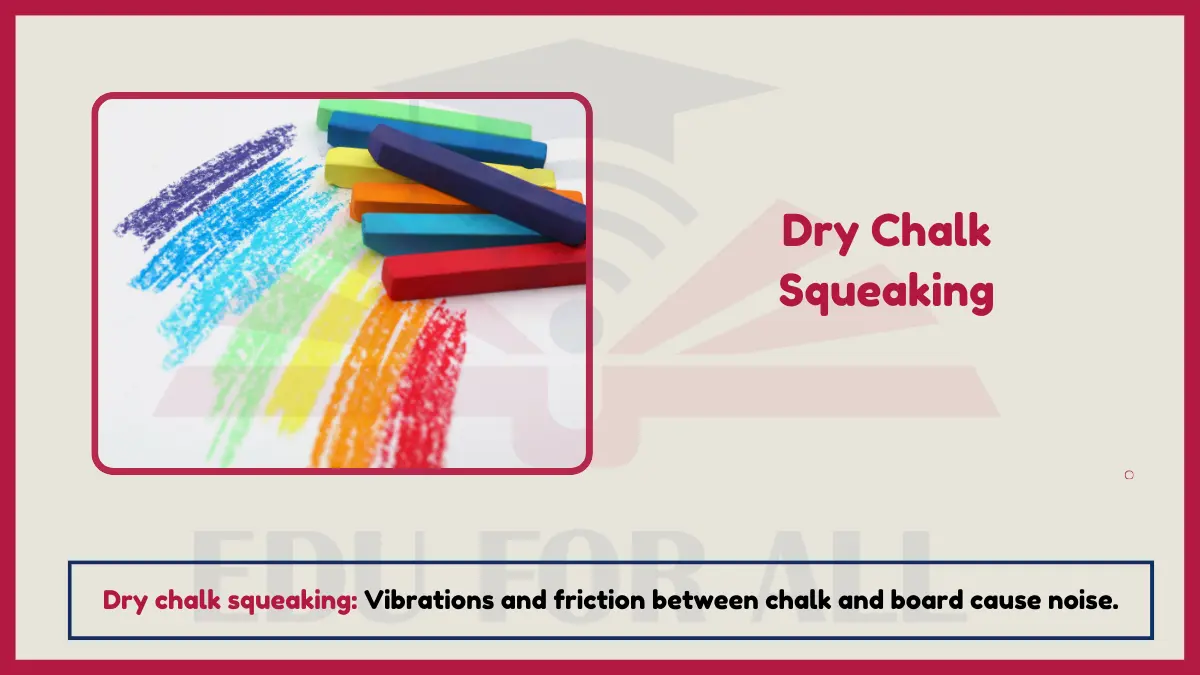
Experiment: Write with dry chalk on a chalkboard or rough surface. Hear and feel vibration and friction interacting between chalk and surface making annoying squeaking noise. Add water to experience lubrication.
9: Scuffing Shoes on Carpet
Scuffing shoes on carpet demonstrates friction generated between materials. The fibers of the carpet catch and resist sliding motion, due to the force of friction acting between the shoe sole and carpet weave.
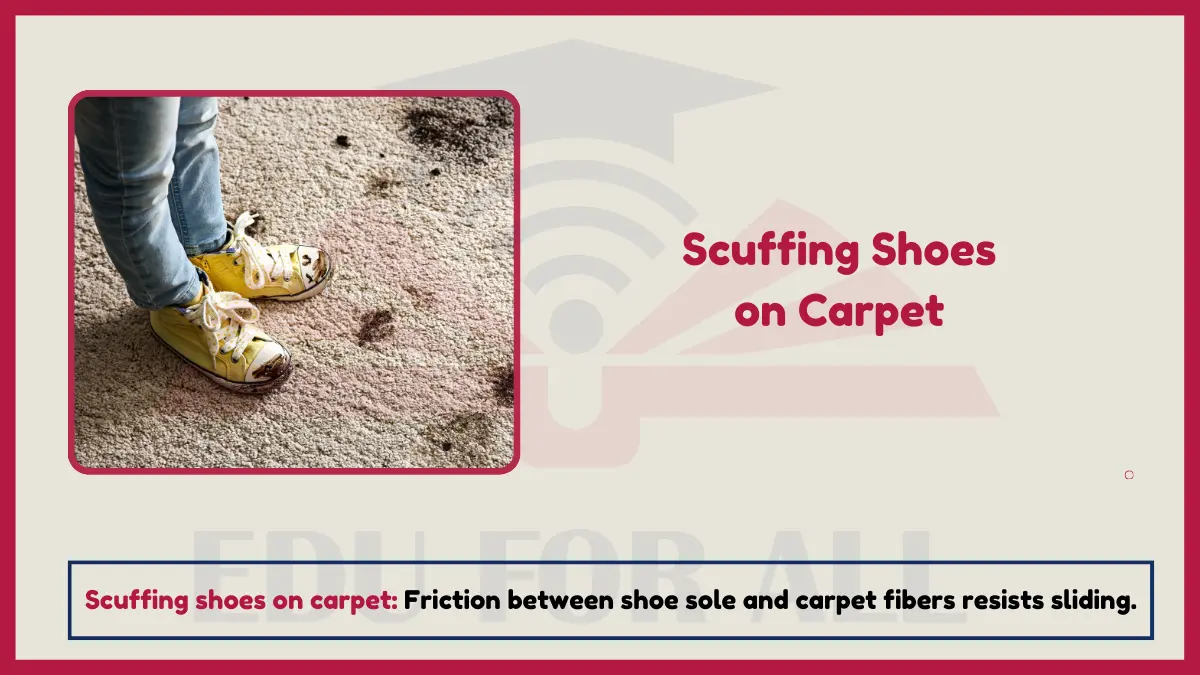
Experiment: Walk normally on carpet, then try sliding feet without fully lifting them. Feel scuffing friction resisting smooth sliding shoe motion against carpet texture and threads.
10: Traction of Car Tires on Wet Roads
Wet roads provide less traction and friction for car tires because water prevents direct contact between the road and tires. Less friction can cause tires to hydroplane or slip.
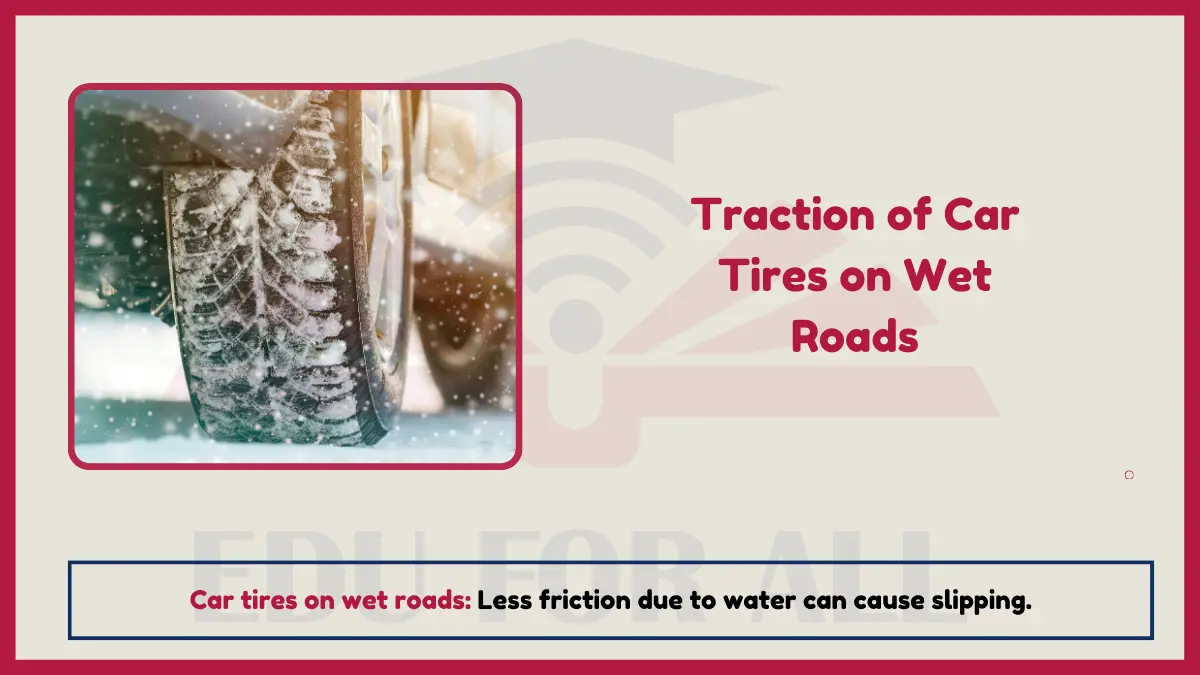
Experiment: Press hands together dry, then again with water spread between them. Feel difference in friction allowing hands to slip and slide easier with water’s lubricating effect. Relate to car tires on wet roads.
11: Sharpening Pencil in Manual Sharpener
A manual pencil sharpener uses friction and shearing forces to shave off and sharpen pencil wood and graphite. Pencil is rotated against sharp stationary blades.
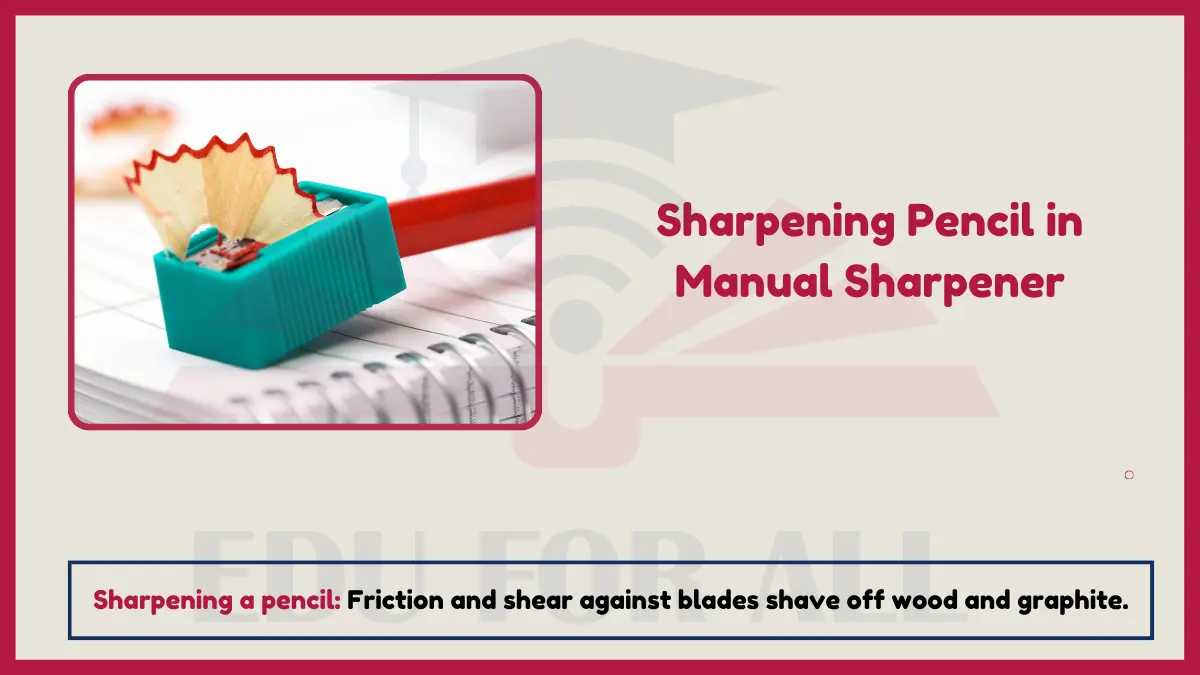
Experiment: Turn crank of manual sharpener while inserting pencil tip. Feel resistance and friction absorbing energy to shave material off pencil with cutting blades to form a point.
12: Kinetic Friction of a Moving Bike Tire
Rolling bike tires in motion overcome kinetic friction, a force resisting motion of objects already moving. Kinetic friction causes the tires to slow when pedaling stops.
Experiment: Pedal a bike to speed. Stop pedaling but keep coasting, feeling how kinetic friction gradually slows tires bringing bike to a stop as friction saps energy of moving wheels.
13: Flint Striking Steel to Start Sparks
Striking flint and steel together causes friction from tiny moving particles interacting at high speeds. Heat from these microscopic friction collisions ignites sparks.
Experiment: Use firestarter flint striker pressed into steel, quickly scraping downward. See sparks from frictional heat. Try different scraping speeds and directions to understand how friction ignites the sparks during scraping motion.

